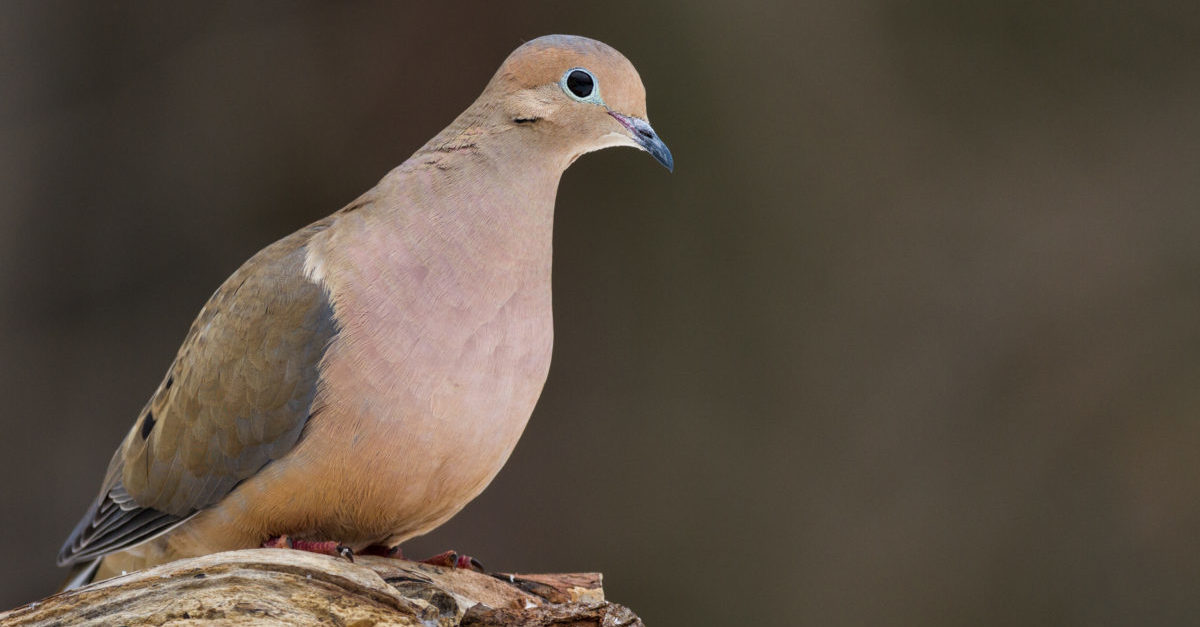For the 2021- 2022 Season

By Gary Costanzo, DGIF Migratory Game Bird Manager
The mourning dove is one of the most abundant game birds in North America. Dove populations have been generally stable from year to year, although we are seeing a gradually decline in their numbers over the past 15 or so years. Population estimates are derived from leg-banding studies and breeding bird surveys conducted in Virginia and throughout the country. Data from recent years indicate there are around 194 million doves in the United States and around 5 million in Virginia. Mourning dove hunting is very popular and is offered in 41 U.S. states and several Canadian provinces.
In the United States, an estimated 750,000 dove hunters harvested around 11.7 million doves during the 2020 hunting season. Recent surveys in Virginia indicate there are around 16,500 dove hunters in the state and the average harvest is around 225,000 doves annually.
Weather Conditions
In 2021, late winter and early spring weather was mild but quite wet, with many areas getting above average rainfall. These wet conditions sometimes lead to a reduction in dove nesting success. Doves build fairly shallow nests that can get damaged by wet and windy conditions. In addition, the nestlings are susceptible to this cool and wet weather, and their survival is often lower in these conditions.
So, some of the early dove nesting was likely hampered by these conditions. However, production appeared to be better during the latter portion of the summer. The summer trapping and leg-banding efforts conducted by the Department of Wildlife Resources (DWR) indicated good production of young doves in the western portion of the state, although somewhat lower production in the central and eastern portions.
Overall, production looks like it will be around average to slightly below average this year.
Habitat Conditions

Shutterstock.com
Dove hunter success often depends not only on the dove populations and nesting success, but also on the condition of the habitat and the amount of food available. Like always, conditions varied around the state. In most areas, planting dates for agricultural crops (corn and sunflower) were close to normal, with mild weather and warm conditions during spring planting.
Good to abundant precipitation throughout the summer has led to a very good crop of both native vegetation and agricultural grains in many parts of the state, especially the eastern portions. Some areas, like the southern Piedmont, saw dry conditions in May and June, but they were the exception. The abundant rain and humid conditions in August have slowed the corn drying and some corn is still green. This will delay harvest in some areas until after opening day, and into mid to late September, depending on which part of the state you’re in. This could concentrate dove feeding activities in those areas where the crops/habitat has been cut. Harvest dates of corn cut for silage appeared to be around normal, and were generally underway in August in those areas where silage is grown.
As the corn harvest increases in early to mid-September, this will open up more feeding grounds for doves. This may also spread the birds out across the available habitat and make concentrations of birds harder to find. Some pre-season scouting may be necessary to help locate areas that doves are using. Look for fresh cut agricultural fields or areas with lots of native plant foods like millets and pokeberry.
Reminders
Remember to check your birds to see if any are wearing leg bands. DWR captures and leg-bands doves in July and August, just prior to the hunting season, along with other states along the Atlantic Coast. The information obtained from this banding program is used for evaluating dove population status and for developing hunting season regulations. Only about 5-8% of the doves we band are recovered by hunters, and most of those recoveries (90%) occur within the state of Virginia. Out-of-state recoveries of Virginia-banded doves have come predominantly from neighboring states or states in the southeastern U.S., including Maryland, North Carolina, South Carolina, Georgia, Alabama, and a couple from Florida. Most band recoveries occur during the first two weeks of the season, and 90% of all recoveries occur during the month of September, an indication that most dove hunting occurs during September.
Remember to report any bands you recover to the Bird Banding Laboratory website – www.reportband.gov. You will receive a “Certificate of Appreciation” that includes information on where and when the dove was banded.
Also, remember to register for HIP well before going dove hunting so you aren’t rushed trying to do everything at the last minute. Enjoy your hunting and be safe. Good luck!


